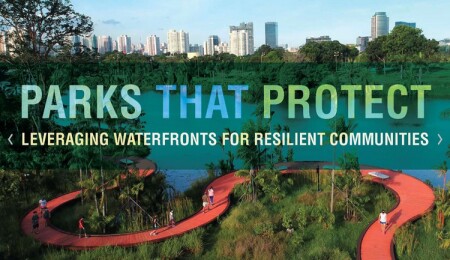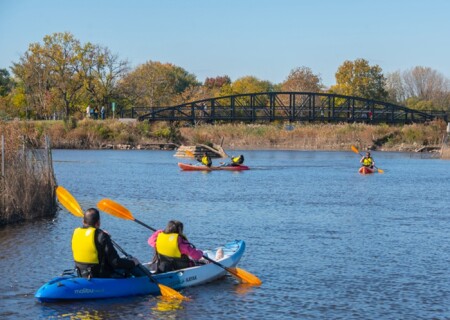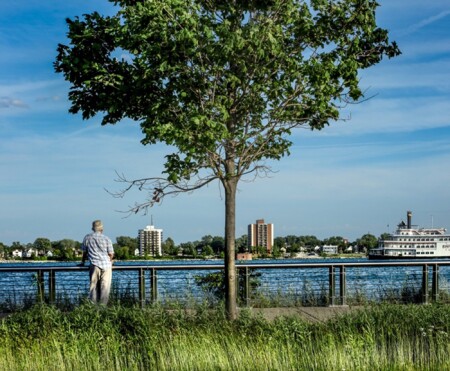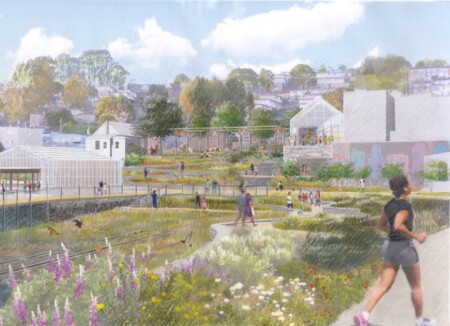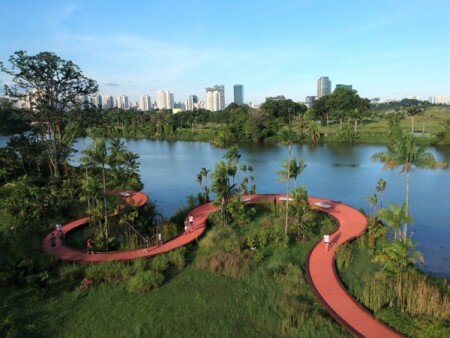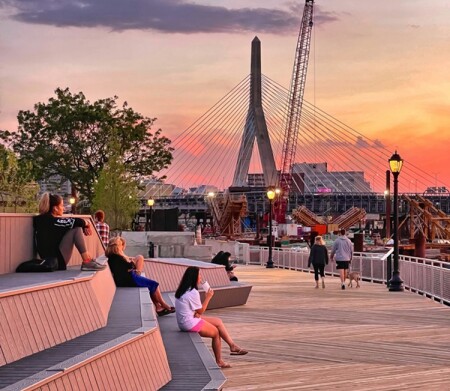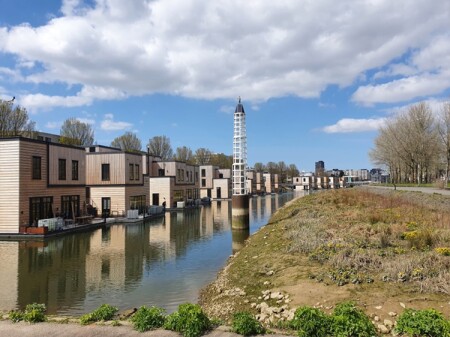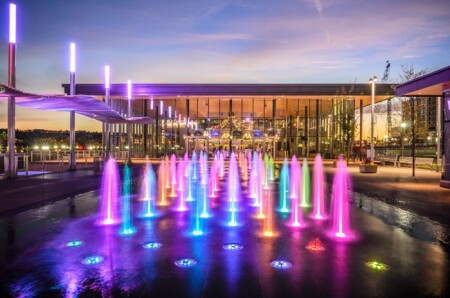Waterfronts have long played pivotal roles in the development, adaptation, and success of cities. From being centers of industry to public spaces, arts and cultural hubs, and mixed-use districts, urban waterfronts have evolved to meet the challenges and opportunities of their times.
Today, public- and private-sector leaders are redeveloping waterfront properties as parks and open space to reconnect residents to the water, provide health and environmental benefits, and increase citywide resilience to the impacts of climate change.
ULI’s new report, Parks That Protect: Leveraging Waterfronts for Resilient Communities, describes seven leading-edge waterfront park projects from around the world that are built to outlast rising waters and severe weather and protect adjacent neighborhoods from climate threats, all while improving residents’ health and quality of life.
These case studies provide valuable insights for city officials, developers, and nonprofit partners working to create resilient waterfront parks in their own communities. Several overarching lessons can be gleaned from these innovative efforts. These lessons include the following:
- Ground decisions in climate-smart data;
- Design for the future;
- Invest equitably across cities and neighborhoods;
- Tap into the community as park co-creators and operators;
- Embrace nature;
- Make every dollar multitask;
- Convene diverse public and private partners to plan, fund, and manage parks; and
- Learn from past experiences to budget accurately.
When applied to waterfront park planning and development, these lessons can advance community resilience by providing physical and social infrastructure that helps neighborhoods bounce back after a climate event.
Working with residents to create resilient spaces is especially important in neighborhoods with high proportions of people of color and low-income people since they often lack access to high-quality parks and open spaces and are particularly vulnerable to the impacts of climate change. These disparities are rooted in longstanding patterns of residential segregation resulting from intentionally racist policies and uneven public and private investments.
With equitable and inclusive community engagement and decision-making, waterfront parks can deliver a host of benefits to the neighborhoods that need them most. These strategies include leveraging data to understand where investments are most needed, prioritizing community engagement in the early stages of the project, and learning from communities about their experiences with climate hazards. Building long-term, trusting relationships with residents will ensure that new park developments deliver community benefits in addition to protecting against climate threats.
Scroll down for a preview of the seven parks featured in the report. Learn more and download the report.
Cramer Hill Waterfront ParkCamden, New Jersey
Overcoming Camden’s history of economic and environmental justice challenges, Cramer Hill Waterfront Park is on the site of a former 86-acre (35 ha) municipal landfill which has been transformed into an urban oasis containing abundant green space and direct access to two rivers. With the community’s vision, nonprofit organization support, and effective intergovernmental collaboration, Cramer Hill was able to reclaim its riverfront for recreation, education, and the enjoyment of nature.
Detroit RiverfrontDetroit, Michigan
With tremendous vision, support from public and private partners, and close community collaboration, a string of abandoned factory sites along the Detroit international waterfront is transforming into a landmark destination for residents and visitors alike. The leadership of the nonprofit Detroit Riverfront Conservancy, charged with the parks’ improvement, operations, security, maintenance, and programming, has supplied the capacity for intensive public engagement and the implementation of this complex, 5.5-mile-long (8.8 km) project.
India Basin Waterfront ParkSan Francisco, California
Guided by San Francisco’s first Equitable Development Plan, India Basin Waterfront Park is intended as a catalyst for environmental remediation, economic opportunity, and public health in the underserved neighborhood of Bayview-Hunters Point. The project, which is underway, is revitalizing and uniting seven waterfront parcels into 1.7 miles (2.7 km) of contiguous public open space, while actively working to preserve neighborhood identity and prevent the displacement of the Black community living and working in Bayview-Hunters Point.
Jurong Lake GardensSingapore
Jurong Lake Gardens is Singapore’s first national gardens in the residential areas outside the city center. Exemplifying Singapore’s vision to become a “city in nature” and inspired by the ideas of thousands of the city-state’s citizens, the lakeside park restores the site’s original freshwater swamp forest as a powerful tool to enhance climate resilience and biodiversity, reconnecting people to the island’s rich flora and fauna, and provide more nature-based recreational opportunities.
Langone Park and Puopolo PlaygroundBoston, Massachusetts
The renovation of Langone Park and Puopolo Playground leveraged a prime harborfront site in Boston’s dense North End to defend the neighborhood against sea-level rise and storm surge. The first to implement the city’s climate-resilient design standards, the groundbreaking project seamlessly integrates a new seawall and other flood-adaptive features with recreational and athletic amenities that are heavily used by the community.
Nassauhaven and HeliportRotterdam, the Netherlands
A leader in climate adaptation, Rotterdam is using a European Union funding program to carry out a series of cutting-edge pilot projects to mitigate flooding, extreme heat, and threats to biodiversity. In the Nassauhaven project, one of the city’s many unused harbors was converted into a natural riverbank that has brought people back to the water, including to live in state-of-the-art floating houses. Driven by a citizen-led design process, Heliport was transformed from an uninviting gray courtyard into a living green square that absorbs floodwater and moderates temperatures.
Smale Riverfront ParkCincinnati, Ohio
Smale Riverfront Park has accomplished the difficult task of safely creating a world-class waterfront destination on the banks of the increasingly unpredictable Ohio River. Its cutting-edge terraced design has endured multiple record-breaking floods, including a storm in 2018 in which the river crested above 60 feet (18 m). The innovative design, along with thoughtful flood response plans, have allowed the park to quickly reopen after storms and continue welcoming visitors.
Download Parks That Protect: Leveraging Waterfronts for Resilient Communities on Knowledge Finder.

